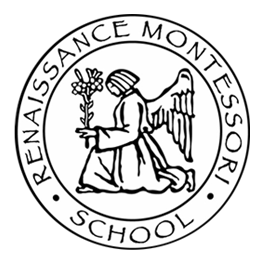Written by Jennifer Ashton, Primary Directress
“it is the smallest of all seeds, but when it has grown it is the greatest of shrubs and becomes a tree, so that the birds of the air come and make nests in its branches.” Matthew 13:32
In the Children’s House, the announcement of Our Lord’s death is always proclaimed in conjunction with His rising. We would never just say that Jesus died on the cross without also saying He rose and will come again! Even when a child comes to us and says, Jesus died on the cross, we would immediately fill in the remaining...and He is risen! We do this for two reasons, first being that death alone can be scary for a young child, but also to lift up the Pascal Mystery of death and resurrection.
The month of March has brought a seed planting work to the shelves, as we prepare for our Outdoor Garden in the spring. We are raising little perennial flowers to start indoors and will later transplant outdoors when there is no chance of frost! Raising perennial flowers from seed helps the children to further ponder the Pascal Mystery as they witness the growth of the plant and the transformation of the seed. When we plant a seed and it grows it does not just become a bigger seed! The seed changes and must “die” in order for plant to grow. We know that the death of the seed is not the end but the beginning of a new life for this flower. The further beauty of perennials, is that this flower will return to us year after year and produce an abundance of flowers in years to come. This leads us to later ponder with the children the strength that hides within the seed, and where that strength comes from. The children joyfully respond they know this strength comes from God! We present an open ended question for them to meditate on, “if God would give a seed this kind of strength, imagine the strength that is inside of us!”
Perennial gardeners have a lovely little rhyme about planting from seed...”first year sleeps, second year creeps, third year leaps!” What I love most about this rhyme is how accurately it describes the development of the 3 to 6 year old child in the classroom. The first year they are with us, parents and teachers alike are left to ponder together the secret of childhood: all that is hidden and sleeping within, the second year we get these glimmers of what they know, what has been developed within them already and what we still need to support to aid them in fully realizing their potential. The third year brings out our great leaders and we see the children leaping into that potential! Our 3rd year children are showing all the signs of this greatness within as they are preparing to shed their seed and burst forth with beauty and grace in the garden!
As we prepare for the Easter Season, keep in mind what a rich activity gardening at home can be! It is an excellent way to bring Scripture into your every day life, a way to introduce responsibility and help prevent wastefulness and also a way to demonstrate the wondrous effects that can result from diligence and patience.







